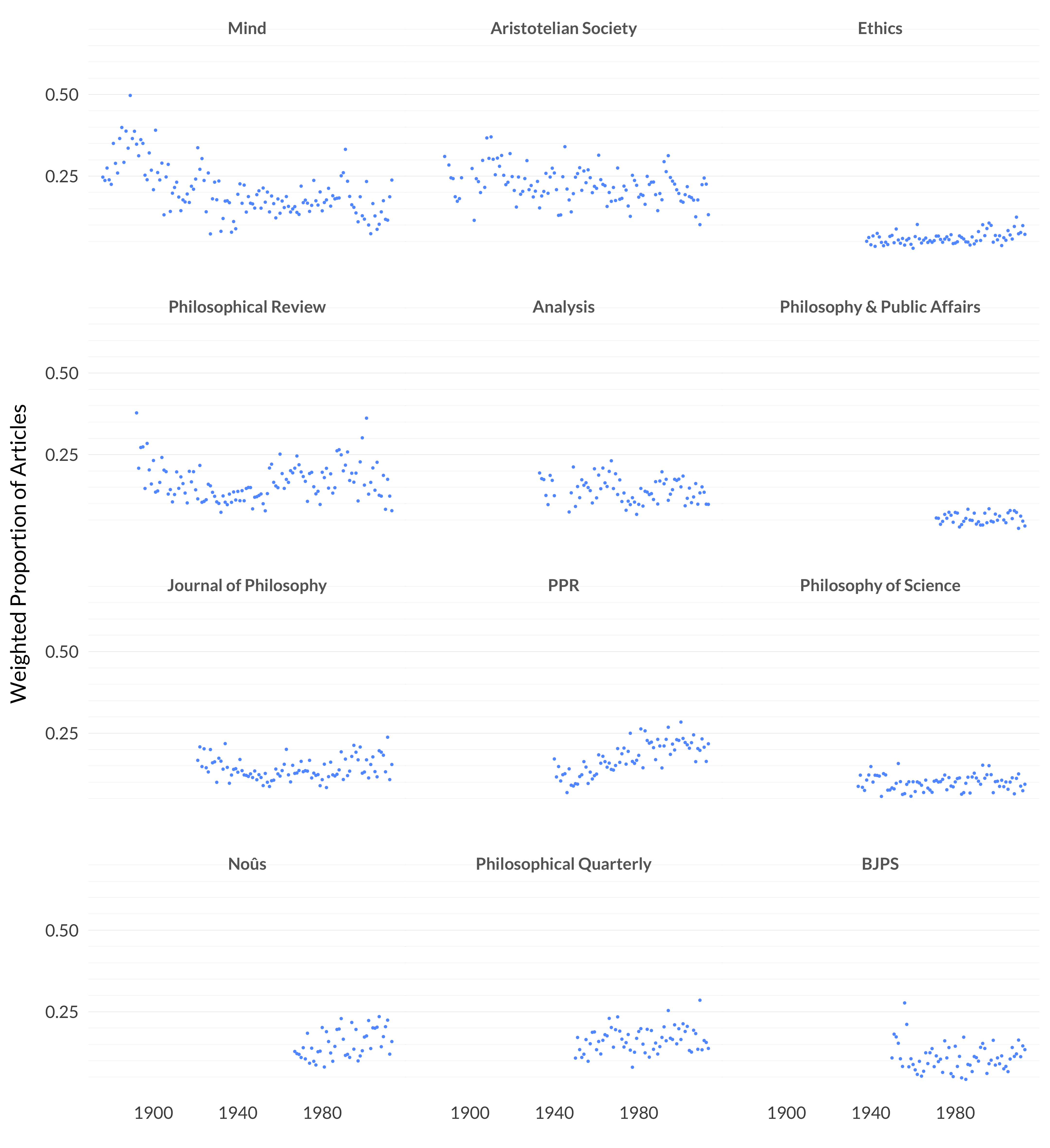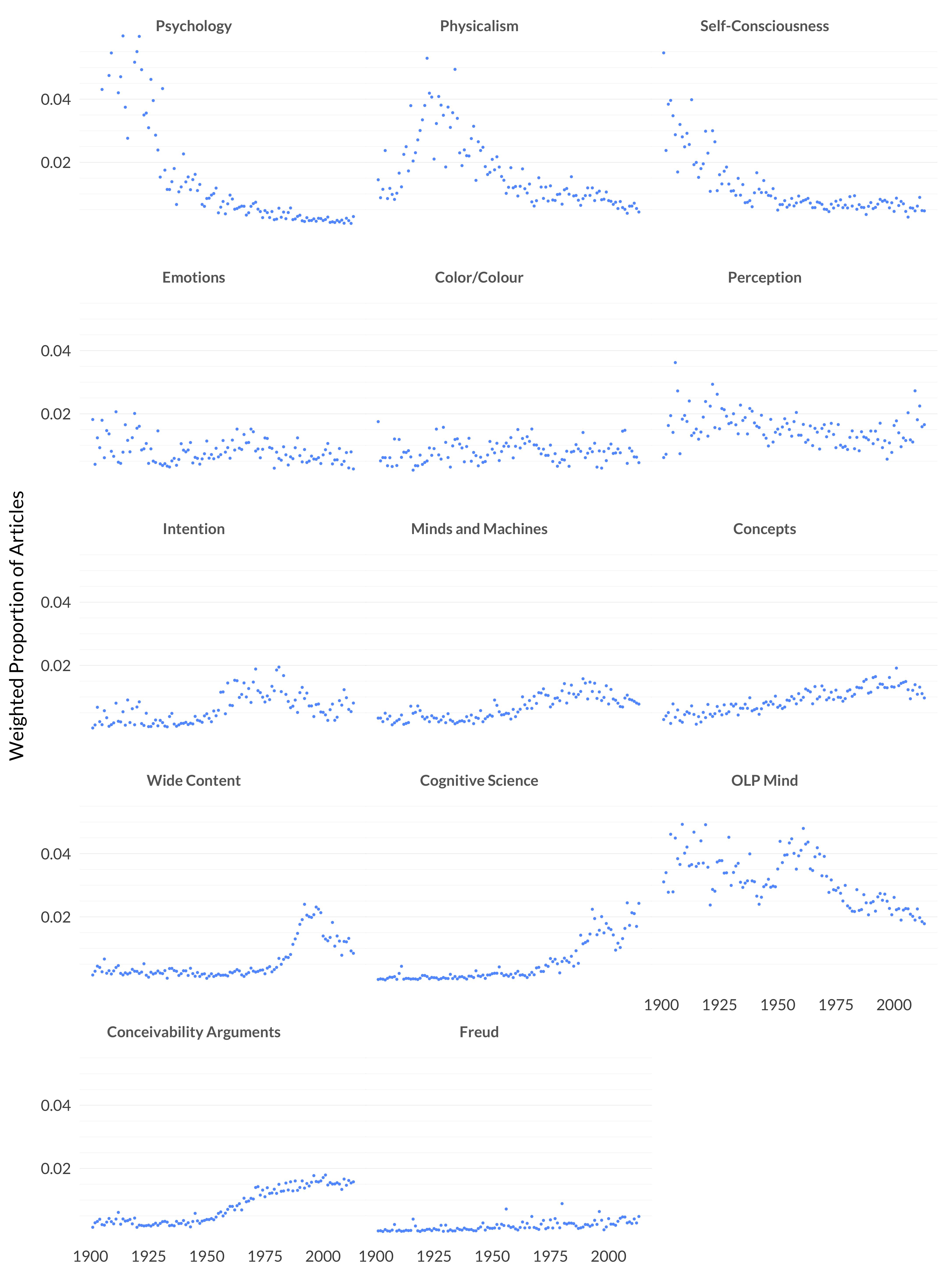4.8 Philosophy of Mind

Figure 4.20: Proportion of each journal’s yearly publications in Philosophy of Mind
Again, it’s hard to see much of a trend here. Mind stops publishing work that is (by contemporary standards) more psychology than philosophy, and that leads to a bit of a fall. Then there is an odd fall in the 1990s, simultaneous with an upsurge in how many philosophy of language papers Mind publishes. But otherwise it’s like every journal decided at its foundation what proportion of its space will go to philosophy of mind, and it has stuck to that pretty closely ever since. Just what topics in philosophy of mind that they’ve covered is much less stable.

Figure 4.21: Topics in Philosophy of Mind
| Subject | Year | Frequency |
|---|---|---|
| Psychology | 1901 | 0.1027 |
| Psychology | 1902 | 0.0809 |
| Psychology | 1903 | 0.0761 |
| Psychology | 1904 | 0.0965 |
| Psychology | 1906 | 0.0764 |
| Psychology | 1907 | 0.0861 |
| Psychology | 1910 | 0.0736 |
| Psychology | 1911 | 0.0730 |
| Psychology | 1917 | 0.0640 |
| Psychology | 1918 | 0.0616 |
The psychology topic, which I had always associated with Mind pre-1900, hangs around into the 1930s. It doesn’t make up a big portion of what Mind does in the twentieth century, but it is an important part of the early years of Philosophical Review. Some of the other topics are arguably papers that could just have easily been classified with Psychology. That’s true for the handful of color/colour papers in the 1880s and the pre-1900 work on emotions. It’s also somewhat true of the early work on self-consciousness, though some of that work is also idealist influenced.
I’ve already talked about the physicalism topic at some length and won’t repeat it here; this was a very large surprise.
OLP mind is the part of ordinary Language philosophy dealing with philosophy of mind. Unlike the ethics part of ordinary language philosophy, the model thinks this was just picking up on an existing trend, rather than building something wholly new.
The more recent topics are not too surprising. Thankfully journals are now publishing more work on cognitive science. I would have guessed that the graph for minds and machines would have started earlier, and stayed higher, than the graphs for conceivability arguments and for concepts, but it’s not too surprising.
The Freud subtopic is tiny, but that’s in part because some of the Freud articles got slid over into intention. I don’t know what the model was thinking there, but it didn’t affect the overall category graphs.